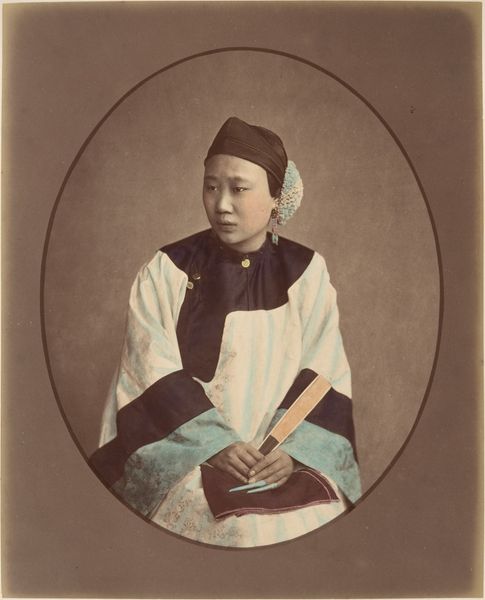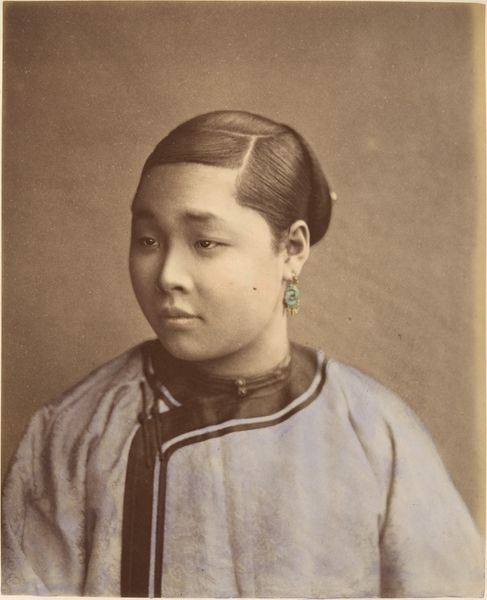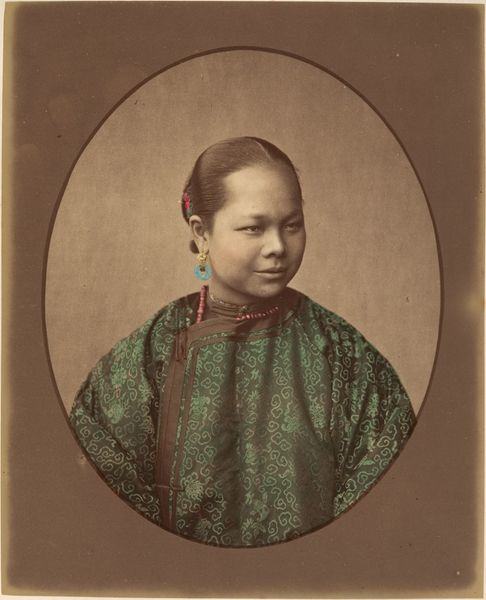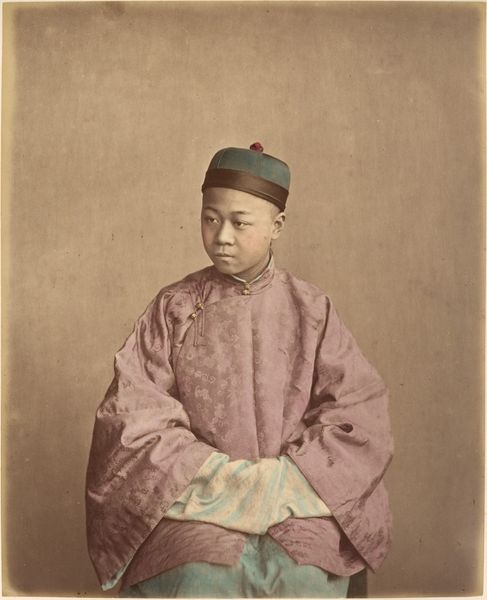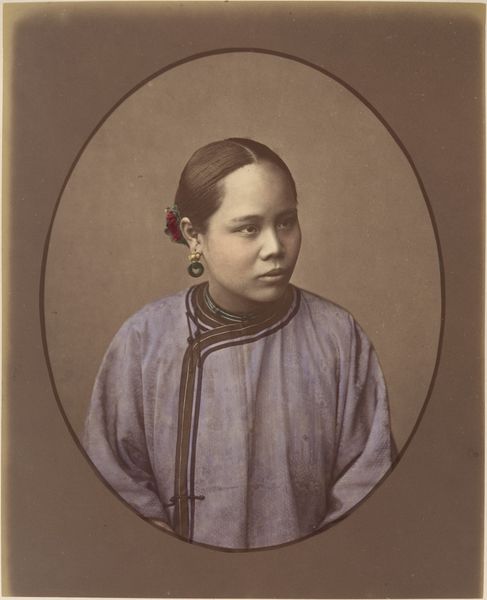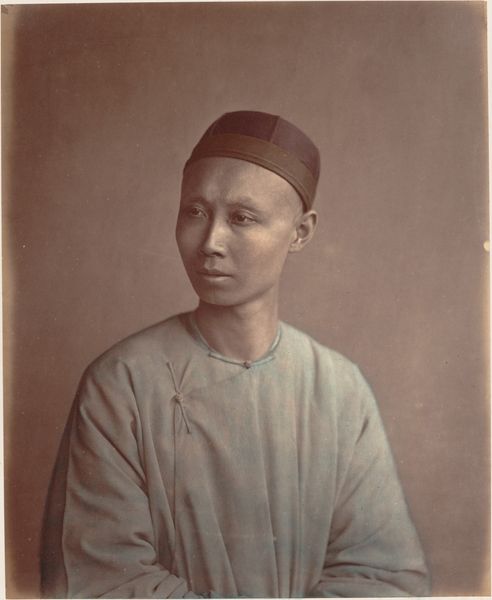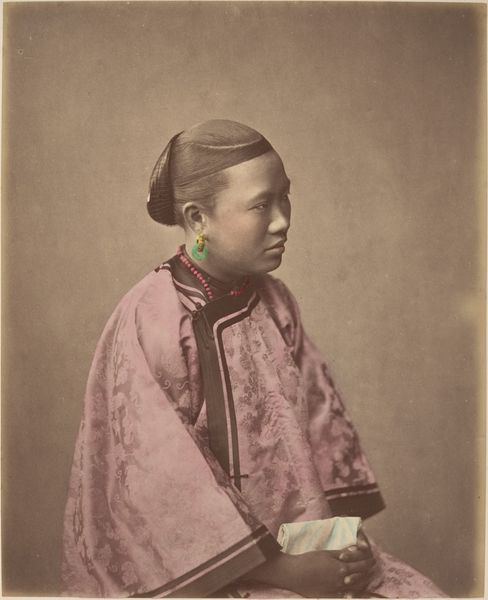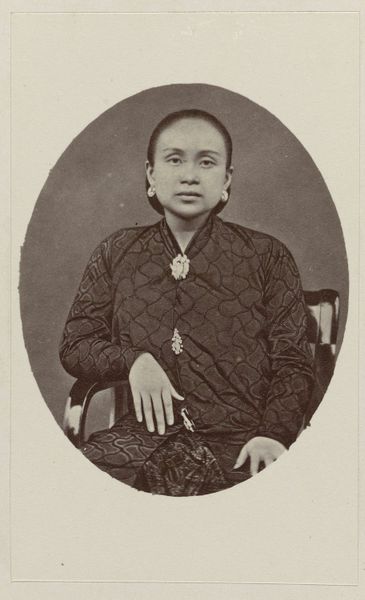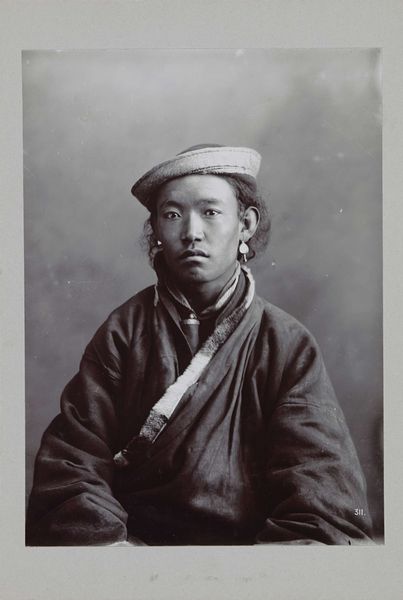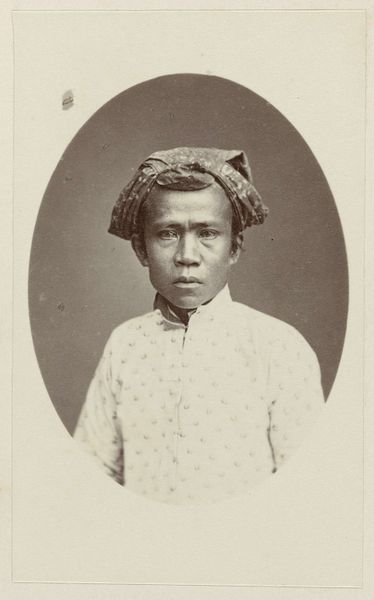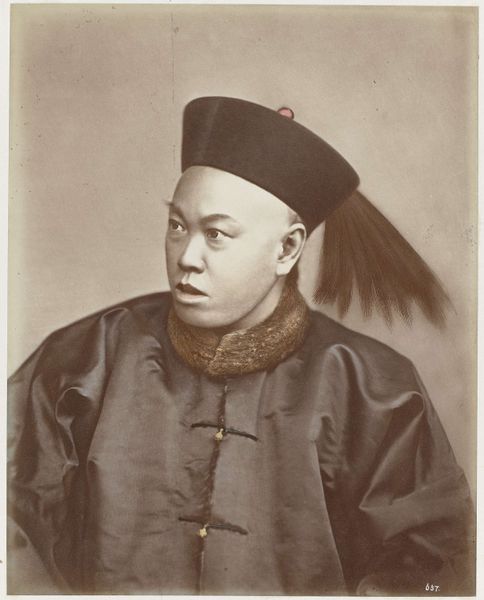
photography, albumen-print
#
portrait
#
wedding photograph
#
asian-art
#
photography
#
historical photography
#
orientalism
#
19th century
#
albumen-print
Dimensions: 23.7 x 19.2 cm (9 5/16 x 7 9/16 in.)
Copyright: Public Domain
Curator: This is an albumen print from the 1870s titled "Fille de Sootchow (Suzhou Girl)" by Raimund von Stillfried. Editor: It’s striking, almost haunting, with that muted sepia tone. The oval frame really focuses attention on the woman's face. There's a stillness in her gaze. Curator: The artist was Austrian, and he worked in Japan. He was known for photographs that exoticized people, often marketed to Western audiences hungry for images of the "Orient." This work raises so many issues about representation and power dynamics. Editor: Absolutely. It's hard to look at it without acknowledging the complex colonial context. I'm curious about this woman. She is obviously wearing traditional clothing, and her jade earrings, together with the jewelry on her hands, possibly communicate her social class? Curator: Indeed. The visual elements become carriers of projected ideas about Chinese identity. Stillfried, like many photographers of that time, meticulously staged these images. The subject almost becomes an icon, imbued with specific cultural narratives the photographer seeks to communicate. Editor: Which may or may not reflect the truth about her reality, her thoughts. I mean, she appears very composed. Was she a willing participant or a passive subject? What were the ethics of photography in those days in Asia? These are urgent considerations for me when confronting imagery like this. We cannot consume them passively without thinking about these injustices. Curator: Those are the right questions. It pushes us to recognize the limitations and the biases inherent in visual records, particularly those produced within asymmetrical power relations. This image makes us see not only a girl in Suzhou but also the history of orientalism. Editor: Precisely. This photograph is both a portrait of a person and a reflection on colonial history and the politics of representation. Curator: Exactly. These types of visual documents help us critically understand cultural memories passed down through time. Editor: And interrogate whose memories are privileged and amplified over others.
Comments
No comments
Be the first to comment and join the conversation on the ultimate creative platform.
